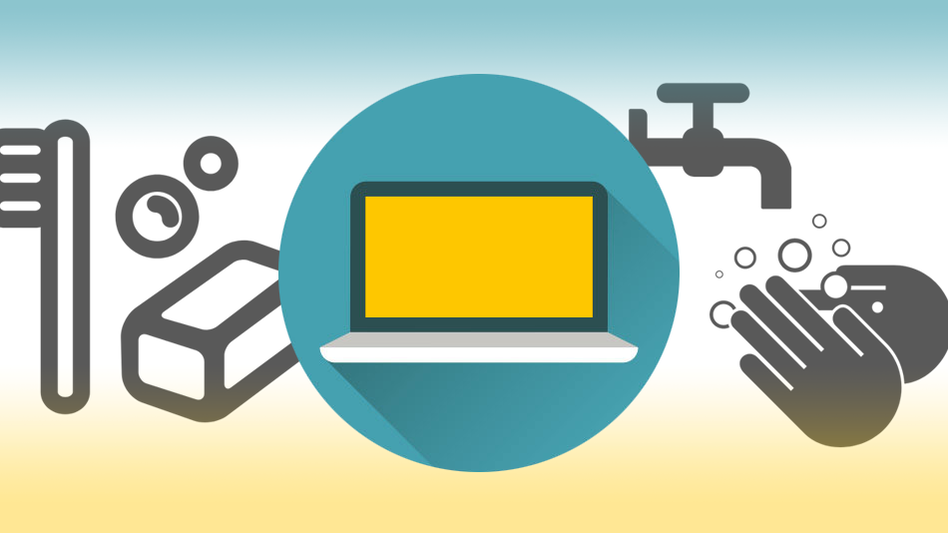Introduction to Cyber Hygiene
Cyber hygiene refers to the process of taking precautions against cyber attacks to safeguard your data and equipment. It’s kind of like personal hygiene, but you’re cleaning and maintaining the health of your digital life rather than your body.
You can adhere to a variety of cyber hygiene measures, but some of the most crucial ones are as follows:
- Using strong passwords and multi-factor authentication (MFA): MFA and strong passwords are crucial for safeguarding your internet accounts. Make sure your passwords contain a combination of capital and lowercase letters, numbers, and symbols, and are at least 12 characters long. Additionally, if at all possible, you ought to activate MFA across all of your accounts.
- Keeping your software up to date: Security patches that address vulnerabilities that attackers may exploit are frequently included in software updates. As soon as software updates become available, be careful to install them.
- Being careful about what emails and attachments you open: Attackers frequently use phishing emails to obtain sensitive data, including passwords. Use caution while selecting emails to open and downloading attachments. It is better to be cautious and not open an email if you have any doubts about it.
You may lessen the risk of cyberattacks on your devices and data by adhering to these cyber hygiene guidelines. It’s crucial to remember that no security precaution is flawless. Although there is always a chance of being attacked, you may lessen that chance by practicing excellent cyber hygiene.
Software and System Maintenance of Cyber Hygiene
For Windows users, software and system maintenance is a crucial component of cyber hygiene. Updating your system and software can help shield you against known vulnerabilities that hackers could take advantage of.
Here are some pointers for Windows software and system upkeep:
- Install the latest Windows updates: Microsoft frequently upgrades Windows with security patches. The operating system’s known vulnerabilities are fixed by these patches. As soon as new Windows updates become available, be careful to install them.
- Use a firewall: Using a firewall might help keep unwanted users off of your computer. Although Windows has a built-in firewall, you might want to think about utilizing a third-party firewall.
- Scan your computer regularly: It’s crucial to routinely check your computer for viruses, even if you have antivirus software installed. Either a third-party scanner or the integrated Windows Defender antivirus scanner can be utilized.
By following these tips, you can help to keep your Windows computer safe from cyber threats.
Safe Browsing and Email Practices for Cyber Hygiene
Cyber hygiene must include safe emailing and browsing techniques. You may defend yourself against a range of online dangers, such as malware, phishing scams, and identity theft, by adhering to these procedures.
The following advice can help you send and receive emails safely:
- Choose the websites you visit with caution. Visit websites you can rely on, and stay away from clicking on links in emails or posts on social media from senders you don’t know.
- Make use of a secure browser, such Mozilla Firefox or Google Chrome. Built-in security features in some browsers can help shield you from dangerous websites.
- Update your plugins and browser frequently. Security patches that address vulnerabilities that attackers may exploit are frequently included in software updates.
- Take caution while opening emails and downloading attachments. Attackers frequently use phishing emails to obtain passwords and other private information. It is advisable to err on the side of caution and not open an email if you are doubtful about it.
- If at all possible, set up multi-factor authentication (MFA) for your email account and use a strong password.
- Attachments from unknown senders in emails should be avoided. If you receive attachments from someone you don’t know, proceed with caution even if you know them.
Data Backup and Recover
Data recovery and backup are crucial components of cyber hygiene. You may lessen the risk of data loss from incidents like malware attacks, system failure, software malfunction, and other occurrences by periodically backing up your data.
Here are some pointers for recovering and backing up data:
- Back up your data regularly. Making regular data backups—daily or weekly, for example—is crucial. The rate at which your data changes will determine how frequently you backup.
- Keep multiple copies of your backups.Maintaining several copies of your backups in various places is a smart idea. In this manner, you will have many copies of your backup in case one is lost or damaged.
- Store your backups in a secure location. Your backups should be kept in a safe place that offers protection from burglary, fire, and other disasters.
Conclusion
In summary, it is critical for Windows users to practice cyber hygiene in order to protect sensitive and personal information. Users may strengthen their online security and lower their chance of becoming victims of cyberattacks by upgrading software on a regular basis, using strong passwords, using safe surfing practices, backing up data, and keeping up with cyberthreats. To ensure a safer online experience, be on the lookout and develop a regular practice of cyber hygiene. Read about our other post at bugify.in













